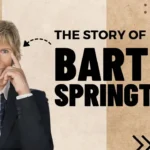Pop Art has always stood at the intersection of popular culture and fine art, a movement that emerged in the 1950s and has since grown to embody vibrant, bold visuals. Names like Andy Warhol, Roy Lichtenstein, and Claes Oldenburg became synonymous with the style. However, in the digital age, a new artist has taken the Pop Art world by storm: Andy Warhella. With a name nodding to the legendary Warhol, Andy Warhella has captured the essence of modern culture, merging traditional Pop Art aesthetics with contemporary digital tools. Let’s explore how Andy Warhella redefines Pop Art in today’s technological landscape.
The Influence of Classic Pop Art on Andy Warhella
Andy Warhella’s work draws deep inspiration from the early pioneers of Pop Art, notably Andy Warhol, who brought a rebellious spirit to traditional art forms. Warhol famously used repetition, bright colors, and everyday objects to blur the lines between commercial and fine art. While Warhella’s work is rooted in these principles, it brings something fresh.
In his pieces, there’s a sense of homage to Warhol’s silkscreens and his obsession with fame. However, Warhella takes this further by weaving digital elements into his work. Through a fusion of old-school Pop Art techniques and digital platforms, Warhella creates something that feels both familiar and entirely new.
Pop Art in the Digital Age: What Sets Andy Warhella Apart?
Andy Warhella’s Pop Art is so captivating because of its relevance in the digital age. Unlike the physical silkscreens of the past, Warhella uses digital tools to craft his art. Programs like Adobe Photoshop, Illustrator, and 3D design software are Warhella’s brushes and canvases. These tools allow him to experiment with texture, color, and composition in previously impossible ways.
For instance, Warhella often blends images from today’s internet culture—memes, social media icons, and viral imagery—with traditional Pop Art colors and techniques. By doing this, he creates a bridge between the Pop Art of yesteryears and the digital experiences of today’s generation. His work speaks to a world dominated by screens, algorithms, and constant online interaction.
Using Digital Platforms to Share Pop Art
Andy Warhella doesn’t just create art with digital tools; he also shares his work through online platforms, making art more accessible to a broader audience. Instagram, TikTok, and virtual galleries have become Warhella’s primary venues for displaying his creations. Unlike traditional art forms confined to physical galleries, Warhella’s art can be viewed, shared, and interacted with instantly from anywhere in the world.
The digital sharing of his work has helped Warhella break free from geographic limitations and engage with a global audience. Furthermore, his pieces often encourage interaction, with some works designed to be altered, remixed, or responded to by viewers in real time.
Blurring the Line Between Artist and Audience
A significant innovation in Andy Warhella’s work is how he invites his audience to participate in the creative process. In the past, Pop Art was something to be consumed. But in Warhella’s digital playground, the audience doesn’t just look—they can become part of the art.
For instance, Warhella often shares downloadable files of his art, allowing fans to tweak and personalize the pieces. This invites collaboration and creates a unique connection between the artist and his followers. By encouraging remix culture, Warhella echoes Pop Art’s original challenge to traditional art boundaries. Yet, he modernizes it for a digital landscape where everything can be shared and altered with a few clicks.
Themes of Consumerism and Fame in the Digital Era
One of Pop Art’s key themes has always been consumerism, and Andy Warhella continues this tradition with a modern twist; in an age where “influencers” are the new celebrities, Warhella’s art critiques how fame has evolved. His works feature imagery of Instagram stars, YouTube icons, and TikTok trends. These images, like Warhol’s Campbell’s Soup cans or Marilyn Monroe portraits, highlight how intensely commercialized fame has become.
Consumerism, too, is central to Warhella’s commentary. He focuses on online shopping, fast fashion, and digital advertisements. His art often juxtaposes the glamor of influencer culture with the underlying emptiness of constant consumption. In doing so, Warhella continues Pop Art’s exploration of the blurred line between art and advertising. Still, he brings it to the present day, where ads follow us from platform to platform, embedded into our daily scrolling habits.
NFTs and the Future of Digital Pop Art
Another area where Andy Warhella is leading the charge is in the realm of NFTs (Non-Fungible Tokens). NFTs have revolutionized how digital artists monetize and share their work. Warhella’s pieces, often sold as NFTs, have opened new doors for how we think about art ownership and value in the digital age.
For Warhella, NFTs aren’t just a way to sell art—they’re a new medium of artistic expression. In some of his NFT pieces, the digital work evolves or changes based on the actions of the person who buys it. This dynamic, interactive approach to art ownership perfectly encapsulates the digital age’s fast-paced, ever-changing nature.
Furthermore, NFTs allow for transparency in the art world that has never been possible before. Through blockchain technology, Warhella can ensure the authenticity and originality of his digital works, which was once a significant challenge for digital artists. The NFT space has allowed Warhella to redefine how art is collected, owned, and experienced.
The Influence of Internet Culture on Warhella’s Art
Internet culture is more than just a theme in Warhella’s work—it’s the foundation upon which his art is built. Memes, viral challenges, and online trends regularly find their way into his pieces. Warhella views the internet as the ultimate cultural mirror, reflecting the values, humor, and habits of the modern era. In much the same way that Warhol turned to celebrities and mass-produced items for inspiration, Warhella looks to the internet for his muse.
By drawing on this constantly evolving digital culture, Warhella’s work feels timely and timeless. It captures the fleeting nature of internet fame and how trends rise and fall at lightning speed.
Conclusion
Andy Warhella is not merely continuing the tradition of Pop Art—he’s completely transforming it for a new generation. By utilizing digital tools, engaging with global audiences through online platforms, and critiquing modern themes of fame and consumerism, Warhella proves that Pop Art is as relevant today as it was in the 1950s.
Through his innovative use of NFTs, participatory art, and internet-inspired creations, Andy Warhella stands at the forefront of the digital art movement. His work challenges us to reconsider the boundaries of art, inviting us to explore the vibrant intersection of culture, technology, and creativity.



